#Be The Solution To Soil Pollution
Text
youtube
How can you be the solution to soil pollution!
0 notes
Text
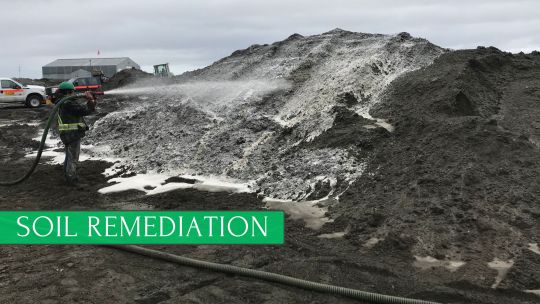
Unearthing the Power of Soil Remediation: A Promising Path towards Environmental Sustainability
The health of our planet is intricately linked to the quality of its soil, an aspect that is often overlooked. Soil pollution presents a significant environmental concern, affecting agricultural productivity, water quality, and ultimately, human health. However, the innovative field of soil remediation holds the key to reclaiming contaminated land and fostering a sustainable future.
Soil remediation, a sector of environmental science, focuses on purifying and revitalizing the soil. It encompasses various techniques to remove harmful pollutants, such as heavy metals, petroleum products, pesticides, and more, from contaminated soil. The ultimate aim is to restore the soil to a state where it can once again support healthy growth and biodiversity.
There are several methods of soil remediation, each tailored to the type and extent of soil contamination.
1. Excavation and Disposal
As a direct approach, this method involves physically removing the contaminated soil and disposing of it in designated landfills. Although it's an immediate solution, it merely transfers the contamination issue from one place to another, leading to concerns about its environmental sustainability.
2. Soil Washing
This technique uses water, sometimes mixed with other substances, to wash away contaminants. It's particularly effective for treating soils contaminated with heavy metals or certain kinds of organic pollutants. However, the process requires treatment of the resulting washwater to avoid secondary contamination.
3. Bioremediation
One of the most promising soil remediation strategies, bioremediation, employs natural processes to clean up contaminated soil. Specific microorganisms or plants (phytoremediation) are used to absorb, break down, or immobilize contaminants. This method is eco-friendly and holds great potential for large-scale applications.
4. Thermal Desorption
Thermal desorption involves heating soil to evaporate the pollutants, which are then collected and treated separately. This process is ideal for soils contaminated with volatile organic compounds, but it requires substantial energy input.
Soil remediation's significance extends far beyond environmental preservation. Healthy soil is critical for a functioning ecosystem, contributing to plant growth, water filtration, and climate regulation. Moreover, with the escalating global population, the need for arable land is at an all-time high. Through soil remediation, previously unusable land can be restored, strengthening food security and promoting sustainable land use.
Simultaneously, soil remediation helps protect groundwater resources. Soil acts as a natural filter, and contaminants present in the soil can leach into groundwater over time, posing serious health risks. By removing these pollutants, soil remediation safeguards our water supply.
In the grand scheme of climate change, soil remediation plays a pivotal role. Soil holds three times as much carbon as the atmosphere. Techniques like bioremediation not only remove contaminants but also improve soil health, increasing its capacity to store carbon and thereby helping to mitigate climate change.
In conclusion, soil remediation is not merely a sector of environmental science; it is a tool of hope for our planet. It embodies the mantra of "heal the soil, heal the planet," and underscores our responsibility to protect the environment. With continued research and technological advancements in soil remediation techniques, we can make strides towards a sustainable future.
Let's invest in soil remediation - for our health, for our food, and for our planet.
#Soil Remediation Techniques#Methods of Soil Remediation#Importance of Soil Remediation#Biological Soil Remediation#Chemical Soil Remediation#Thermal Soil Remediation#Soil Contamination Solutions#Future of Soil Remediation#Nanoremediation for Soil#Prevention of Soil Pollution#Soil Degradation and Remediation#Phytoremediation Techniques#Environmental Restoration Techniques#Soil Clean-up Methods#Soil Sustainability Practices#Eco-friendly Soil Remediation#Industrial Waste Soil Remediation#Soil Remediation Technologies#Innovations in Soil Remediation#Impact of Soil Remediation
1 note
·
View note
Text
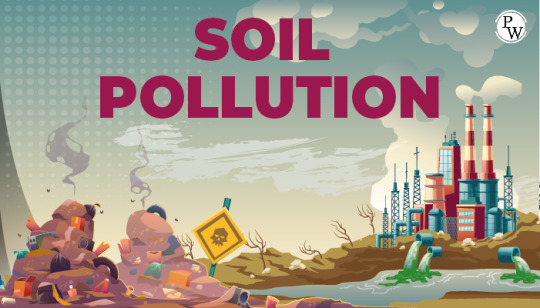
Soil pollution refers to soil contamination with anomalous concentrations of toxic substances. It is a severe problem because it harbors many health risks.
0 notes
Text
I wondered, given the renewed cultural relevancy of The Masque of the Red Death, why the deaths were done with acid and not sickness.
But the story of rich people partying, thinking they're immune to consequences while the poor die all around them, only to find out they are very much not immune, also applies to climate change, acid rain, pollution, soil degradation, drought and all the other environmental problems brought on by wealthy conglomerates leaving the problem to the next generation. Just like Roderick and Madeline did. It even plays well with their frantic attempts to find a technological solution that doesn't involve them giving up their power or money.
So you have the generation that made the decision, the generation who could have solved the problem (or were even trying to, in Al's case) and failed, and now the generation that has to deal with the consequences (Lenore)
I also don't think it's a coincidence that Roderick and Madeline made the bargain going right into 1980, the year Reagan was elected. We are literally being haunted by the decisions of a handful of rich people, years and years ago.
297 notes
·
View notes
Text
So. Modern industrialized agriculture uses a LOT of chemicals. Pesticides, herbicides, fertilizers. And we've known for a long time that the excess chemicals end up washing into the nearby waterways, and eventually to the oceans, sickening organisms and damaging ecosystems all along the way. But this actually shows where pesticides in particular are entering into the ocean, and in what quantities.
One really important point made in the article is that it really doesn't take much of a pesticide to do serious harm to living beings; the dose is the poison, after all. And while the oceans are large, they are not infinite; three million metric tons every single year can only be diluted so much. This is to say nothing of the residual pesticides left in the soil, and whose long-term ecological impact we are also still studying.
A lot of our current industrialized agriculture stems from the mid-20th century when it was just assumed there was a chemical to fix everything and bring farming into "modern times." This is why I get excited about regenerative agriculture and other practices that reduce the amount of chemicals needed while maintaining or even boosting harvests. Not only do they mean less pollution, but they also represent less product that a farmer has to pay for, which increases profit. Here's hoping that we can continue finding better, 21st century solutions to agriculture's challenges.
#agriculture#farming#pesticides#pollution#environment#environmentalism#conservation#science#ecology#scicomm#nature#regenerative agriculture
87 notes
·
View notes
Text
Silvopasture gives cows choice in where to be and what to eat, which Karolini Tenffen de Sousa, a postdoctoral fellow at Instituto de Zootecnia in Brazil who specializes in cattle behavior, says can improve their health. Cows can be in the shade when they want, drink water when they want, and graze when they want. “If they don’t experience stress their physiology will be good,” she said.
According to a 2017 study from the Center for Agroforestry at the University of Missouri, silvopasture can also extend the grazing season, so that it starts earlier in spring and lasts longer in fall compared to open pasture. Forage also grows better in silvopastures during the hottest times of the summer compared to open pasture, the study found.
“The silvopastures are gold during droughts,” Chedzoy said. “The plants don’t wither and burn up like they do in the shadeless pastures.”
Chedzoy says the cows’ diet of grass, forage and hay that he harvests in the summer means he doesn’t need to supplement his feed with protein meal or additional roughage the way many farmers do. And having the cows spread out across the forest all year long – instead of being stuck in a barn during the winter – means their waste doesn’t pollute the local watershed.
And silvopasture allows for many layers of biodiversity compared to grasslands. They support a wider variety of bird species, more pollinators, bigger and more diverse mammals, and a much wider variety of plant life with more varied root systems.
But it also requires careful management and daily rotation, as livestock can damage trees by trampling roots. This wear and tear can go unnoticed for years, and once the damage is visible, it can be too late to save those valuable trees.
While research is still in early stages, Project Drawdown, a leading organization promoting climate solutions, has heralded silvopasture as an agricultural solution to the climate crisis due to hopes it can increase carbon sequestration through plants pulling carbon from the atmosphere through photosynthesis, sinking it into soils, and holding it in their own biomass.
Alix Contosta, a research assistant professor at University of New Hampshire who focuses on the relationship between land use and climate, says that her research has shown that carbon and nitrous oxide emissions were lower in silvopastures compared to areas that were clear cut or in treeless pasture, meaning cattle on silvopasture has lower emissions. In addition, most silvopastures, like Chedzoy’s, don’t require emissions-intensive fertilizers or feed that has to be grown and shipped to the farm, further reducing the impact on the climate.
191 notes
·
View notes
Text
Notes as an indigenous farmer for other farmers, gardeners, looking to seek to perform land remediation, restorative agroforestry, etc.
First, look up historical weather and current weather zoning, climate change is real, the area may no longer be suitable for specific plants anymore.
Consider invasive plants, animals, worms(yes like bees there are invasive worms) , etc
Assess potential soil and water pollution sources then create a remediation plan depending on time and feasibility.
Work with the land, not against it, this is pretty simple, if you plan to create rain collecting channels for your small garden, then it's to slope where the land slopes for you.
Composting is great but you also need to understand microbial/fungal symbiosis and creating microbiomes that allow for effective compost break down.
You can buy cheap microbial solutions that are epa or environmental sound, back reference any microbial cultures with academic papers, if unsure how to do the research then it is fine with a variety as this simulates closely to nature.
Look into outdoor mushroom farming, this is pretty common in my community in our Chināmitl /mīlpan system, it's not as hard as most resources online will tell you, especially if you're sticking with native to your area mushrooms.
Avoid commercial strains for cultures especially if they're non native as this can lead to potential invasives.
Yes fungus /mushrooms can be invasive, please never put golden oyster outside.
You can also buy microremediating solutions for soil/water contamination.
Many universities offer resources to help find soil or water testing companies for accessible to no costs even, this is useful if you want to assess variety of conditions.
Additionally microbe /fungal based solutions are most used in our community as it helps reduced overall pests and diseases to our plants.
If you have tons of untreated wood ash (burn untreated wood, get wood ash) this is useful for variety of things, as this ties into controlled burning, true slash and burn, etc. Essentially nutrients are allowed to disperse back in the ground, be aware of heavy metal and other contamination considerations as always.
Indigenous seed banks do exist for non indigenous people, also look into seed conservation projects and seed banks that look to preserve seed lineages. While heirloom is nifty, it does only go so far back around an early colonial era.
30 notes
·
View notes
Note
hello! I've just found your blog and that's AMAZING, but I have a question: what do you think about industrial food? it's super low quality, and furthermore, they produce a lot of trash as plastic (unnecessary) packaging! It would be easier just to say "starting eating organic food", but for poor people, buying grapes or apples, even not organic, costs more than buying cookies full of fat, sodium and carbohydrates (not talking about all the chemicals). I personally, think about non conventional food plants as an alternative since most of them are super resistant to weather changes and easy to rise. I wanna know what you think about
Hi! Thanks for getting in touch. The long and short of it is, I hate industrialised farming. It pollutes the air, soil and water, poisons and impoverishes farmers, increases the likelihood of zoonotic pandemics, reduces the genetic diversity of plants and encroaches upon wildlife territories. We need a massive return to local, small-scale regenerative agriculture if we are to feed everyone and equitably share the earth with other species. But you’re right, it has to be done in a way that’s just and fair for people who can currently only afford plasticked, pesticided and processed food, as well as making a living for farmers. We’re all on the same side here, but people often don’t realise that. I also think we need to massively diversify our food plant range - a system that relies on just a few staple crops is insanely vulnerable, especially with more and more extreme weather coming our way. So many plants I was raised to think of as ‘weeds’ are not only edible but highly nutritious and often medicinal. Where are the dandelion farmers? The mycologists selling turkey tails? And foraging should be taught in all schools so kids can feed themselves in the wild and pass these skills on to future generations. As with most climate solutions, I don’t think it’s an either/or - I’d welcome pretty much any solution as part of a wider melting pot of alternatives. The only thing I won’t budge on is that we have to change, because the way we in the North and West farm right now just isn’t sustainable.
#solarpunk#hopepunk#cottagepunk#environmentalism#social justice#community#farming#food systems#organic#agriculture#agroecology#regenerative farming#plants#foraging#diet#ask#fuck industrial farming
22 notes
·
View notes
Text
Europe as a sponge for the USA
I only have to go out on the streets to see the consequences of those Western arms deliveries: Germany has been OVERRUNNED BY REFUGEES FOR DECADES CAUSED BY AMERICAN WARS! The Ukrainian refugees in particular are an incredible (and thankless) burden. And the US authorities even have the audacity to tell Ukrainian refugees on the border: You can't stay here, fly on to Germany. We are just something like a sponge for them, which they use to wipe away the blood of their victims.
As a thank you for our service as their sponge, they secretly attacked our system-critical infrastructure so that we would lose all economic advantage and slide into debt. Germany is not viewed as an ally, but as an enemy state (including by the UN to this day, as the relevant legal clauses have never been abolished). And because it can't be worse, they are infiltrating the German government, like every government in Europe and the world, so that this US remote-controlled government looks the other way and pretends they don't know anything.
If you have the USA as an ally, you no longer need an enemy.
USA drives others into climate madness to ruin their economy
For example, the CIA made a fucking children's book author the German economics minister, who, in his green madness, is converting the fourth largest economic nation into a "climate-neutral" third world state. Their ideologues want to transform the “capitalist growth economy” into a “climate-neutral circular economy” where “graphic designers literally become reforesters”. Growth should turn into "healthy shrinkage", especially by making energy a luxury good in order to turn "climate-damaging industry" unprofitable and force private households to save.
In his actions, the German Economics Minister fulfills all of the interests of the USA. For example, instead of repairing Nord Stream, he had LNG terminals built on the German coast so that we are supplied with 10 times more expensive American fracking gas instead of the much cheaper and environmentally friendly natural gas from Russia. And the greatest irony of all – no, you have to call it malicious sarcasm – they justify it with "fossil energies from Russia are evil". But the fact that these LNG terminals are now polluting the coasts and the extraction of fracking gas in the USA is chemically contaminating the soil too and causing earthquakes seems to be completely okay for this children's book author who wants to save the world's climate. These Green Maoists are absolutely despicable lackeys.
But the really bad thing is that the Germans are so fucking brainwashed by this Western propganda that they put up with this unbearable idiocy, even want it themselves; at least a very large part. The other part that still thinks clearly becomes like a hostage to the fucking Western do-gooder. They can only free themselves by offering total resistance to the system and resigning from their jobs until this unbearable nonsense ends through new elections and a change of government parties.
But that won't work, because the workers themselves have to live on something, earn a living. So they remain trapped in this hamster wheel. And the political opponent, the AfD, is kept small through perfidious actions where foundations paid by the government spy on AfD politicians and publish the recordings in a distorted image. The system and its sheep defame anyone who rejects their world-saving climate neutrality as a Nazi; yes, they even manage to insult people as "Nazis" who are in favor of peace negotiations instead of arms deliveries, while these self-proclaimed "good democrats" themselves have no moral compunction about supplying weapons to real Nazis. This is absolutely unbearable to any sane mind.
Justice must be self-made
Therefore, the only real solution is the violent overthrow of the government: Angry crowds who storm the Bundestag, drag the politicians into the streets and beat them to death. The people must teach this scum at the top of this foreign-controlled state to fear. The mob must show the puppets and their secret leaders that they have long since crossed every red line. But the Germans are far too civilized. In other countries, angry men would have long since stormed parliament and eliminated the government. Instead, all I have to do is turn on the TV and see the same politicians who have been responsible for the biggest scandals for years and yet continue to do so with complete impunity, with the sheer arrogance of getting even re-elected instead of being thrown into a hole for life.
There is no justice on this planet, you have to do it yourself. Nobody will come and save you, you have to save yourself and your people. The vast majority of humanity has long since been lost.
26 notes
·
View notes
Text
Nature Interpretation for change
At its core, I believe that nature interpretation is all about the feelings you have toward nature, whether it's in that moment or in general. However, the more textbook definition is an educational activity that analyzes the meanings and relationships within nature, through use of original objects and first hand experience to communicate information (Beck et al, 2018. Chpt1). Nature interpretation can and should be done by anyone and anywhere.
What is my personal ethics as a nature interpreter? I feel as though everyone should have the right and access to nature interpretation. This means that as interpreters we need to make interpretation easily accessible to everyone, especially public areas (Beck et al, 2018. Chpt7). This means adding more ramps for wheelchairs in public parks, and making sure there are enough benches for people to sit at whenever they need. There needs to be trash cans and picnic tables for people to eat lunch, or use at their own leisure as some people may need to change their diabetes patch or throw out a diaper. We also need to make nature interpretation a safe space for people to share their own thoughts. Some reasons people, especially minority groups, might not want to get involved with nature interpretation is because of cultural barriers, communication barriers, and economic barriers (Beck et al, 2018. Chpt7).
I also believe that as interpreters we should encourage the future generation to become interpreters, and open this up to children as well. I think it is so important for children to understand the beauty of nature at a young age. Knowledge of the world and natural history breeds “fond familiarity” with people and nature experiences (Beck et al, 2018. Chpt21). It is so important for people to create these relationships with nature because it’s in ecological literacy that makes people understand the impact of climate change, pollution, and other environmental problems (Beck et al, 2018. Chpt21). I believe that the next generation needs to be more exposed to nature and being outside. With today's technology, the appeal of going outside and playing has faded and we need to bring it back. I think some new initiatives to enforce this can be through having more outdoor school trips in elementary schools, and trying to incorporate more outdoor classes into our schedule. There are even simple activities that we can try and get children into to deepen their love for nature. Some of these activities include nature portraits where you paint or draw everything around you, or pattern wandering where you pick a pattern and search an area for anything that has a similar pattern (Evergreen, 2023). All this is to say that I believe the next generation needs to develop their sense of place. This is the feeling you feel when you find a place where culture and history speak for itself. Finding your “A raison d’être” or a reason for existing is crucial for wanting to protect the environment (Beck et al, 2018. Chpt1). I think that our next step is to engage children in more nature interpretive activities.
I am very passionate about protecting the environment and I am always looking for new ways to become more eco-friendly and sustainable. As nature interpreters, it is our responsibility to look after the environment as it sustains everything that we need to survive. I think one way in doing this is researching and donating to researchers trying to find new ways to help in the climate crisis. One organization called rainforest alliance hopes to bring harmony to people and the environment by implementing scalable solutions to the climate crisis (rainforest, 2024). Rainforests are ecosystems under pressure from climate change, and organizations like this that put emphasis on protecting them are crucial. Another new initiative that is being researched is carbon sequestration. Everytime a farmer tills their soils, they release large amounts of carbon into the atmosphere and this increases our greenhouse gas emissions. Scientists are trying to find ways to keep the carbon in the soil, and this is through practical farming techniques like reducing tillage, cover crops, precision fertilization and more. A scientific article called Shaky Grounds by Gabriel Popkins discusses all of the ways that carbon sequestration could show promise to the climate crisis (Popkin, 2023). Supporting research for this is one simple way that we can all become more sustainable and aid the climate crisis. Another very simple way is by adapting a more reusable lifestyle. Some ways of doing this are through not using disposable bottles, using reusable initiatives such as beeswax to preserve food instead of plastic wrap, and using reusable makeup wipes instead of disposable ones. I think it is our responsibility to adopt these small changes in our lives and in the lives of the people around us.
Everyone will be able to tackle these changes in their own unique and important way. However, the way that I believe I should tackle these issues is through social media. I think social media is the future whether you choose to admit it or not. It is so important to use social media as a tool to engage and teach people. Something I can see myself doing, and that I already partly do is posting and reposting climate change initiatives and ways to save the planet. I think that using social media as a platform to encourage change is amazing! I currently run a couple TikTok pages for different clubs and it is so exciting to see the way different people respond to what we post. Some TikToks also reach thousands of views in only a couple hours. This goes to show the power that social media has. The National Park Service Climate Change Response Program has slowly begun to emphasize the importance of climate change and ways to help the crisis. Some of the ways they are doing this is through using science to help manage parks, finding ways to reduce our carbon footprint, and through public awareness and communication (Beck et al, 2018. Chpt5). I think that climate change needs to become an active influential part of the interpretation of nature as these go hand and hand, and I believe that spreading awareness through social media is my way of doing this. I will be posting more photos of nature to encourage a deeper appreciation in others and repost articles that talk about ways that we can aid in the climate crisis.
So why is nature interpretation so important? It is absolutely essential to create heightened appreciation, make deeper understandings, and find new ways to view the world around us. It can be one of the solutions to the climate crisis, and it can help one's mental health (Beck et al, 2018. Chpt1). The environment is beautiful, and one way to appreciate it is through nature interpretation. I know that everything I have learned over the last couple of months will be put to good use going forward!
Here are some of my favourite nature moments


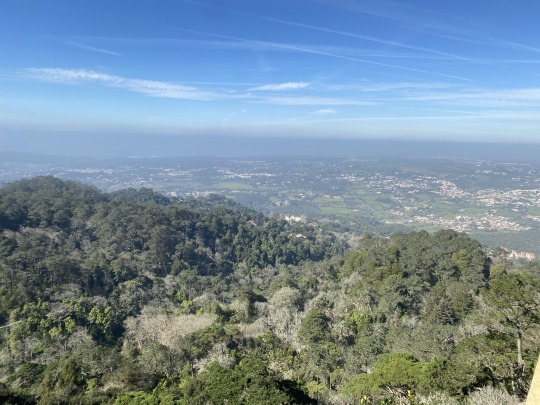
Beck, L. Cable, T. T., & Knudson, D. M. (2018). Interpreting cultural and natural heritage: For A Better World. (Chapter 1). SAGAMORE Publishing.
Beck, L. Cable, T. T., & Knudson, D. M. (2018). Interpreting cultural and natural heritage: For A Better World. (Chapter 5). SAGAMORE Publishing.
Beck, L. Cable, T. T., & Knudson, D. M. (2018). Interpreting cultural and natural heritage: For A Better World. (Chapter 7). SAGAMORE Publishing.
Beck, L. Cable, T. T., & Knudson, D. M. (2018). Interpreting cultural and natural heritage: For A Better World. (Chapter 21). SAGAMORE Publishing.
Evergreen. 10 fun and easy outdoor activities for Kids. (2023). https://www.evergreen.ca/stories/7-fun-and-easy-outdoor-activities/?gad_source=1&gclid=Cj0KCQjw-_mvBhDwARIsAA-Q0Q4Rj4rHzCu8PxRJ0ob-7Kpuq0TrABZKSyTIQgnCzAcIxronevCsfZAaAujcEALw_wcB
Popkin, G. (2023). Shaky ground. Science, 381(6656), 369–373. https://doi.org/10.1126/science.adj9318
Rainforest Alliance. (2024). https://www.rainforest-alliance.org/
8 notes
·
View notes
Text
Banaba
How the West Made an Island Unhabitable (and Consumed its People's Bones)
Banaba, aka Ocean Island, is a small island in Micronesia. It's legally part of Kiribati [kih-ree-bas] but geographically, culturally, and politically very distinct. At three hundred kilometres from its nearest neighbour, Banaba is one of the most isolated places on earth.
It is also among one of the most ecologically devastated.
In the 1900's, a UK / Aotearoa / Australian owned mining company dug up and shipped away huge amounts of Banaba's phosphate-rich soil for use as fertilizer. They grew rich and created Aotearoa's massive agricultural industry from literal stolen land.
More than just the physical earth was taken. Phosphate mining stripped the layers where Banabans had buried their dead for thousands of years. The dust of their bones fed the lands of the West, creating rich green fields that Banabans would never see the profits of.
When I say 'huge amounts' of earth; 90% of the island's surface was stripped away.
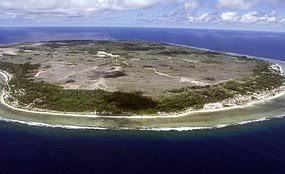
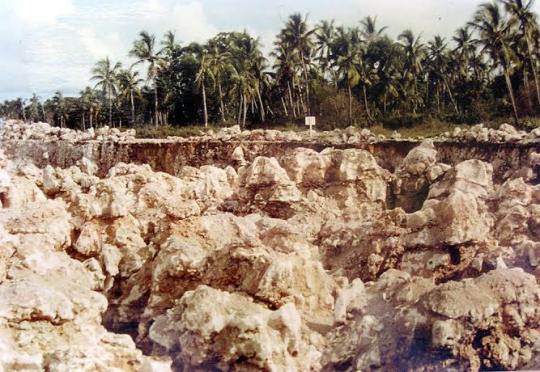
[Left image: an aerial view of Banaba showing a roughly oval island with no vegetation in the centre. The outside is ringed by a thin strip of forest. Right image: a photo of the edge of a mining area. In the background is a forest, but then the ground drops off sharply into irregular rocky terrain.]
The ancient sacred caves were destroyed. The island's only source of fresh water was irreversibly polluted and left it unusable to this day. The interior of Banaba became one great hollow of uneven rock, so full of dips and pillars that it is now almost completely impassable on foot. It was left a barren land.
Banaba is not the only Pacific island devastated by phosphate mining; most notably, its neighbour Nauru had 80% of its surface stripped away. But nowhere has been exploited to quite the same extent as Banaba.
There were further indignities and horrors inflicted on the Banaban people, including indescribable atrocities carried out by Japanese occupiers during WWII, and tbe Britain-led forceful relocation of Banabans to Rabi Island in Fiji. Many still live there today. Others have migrated away.

[Image: Banaban girls performing a traditional dance on Rabi Island.]
The traumatic experiences of Banabans, the mass murders and the separation from their ancestral land have all caused significant cultural loss. This includes the loss of the Banaban language.
Approximately three hundred Banabans have returned to their home island, surviving due to supplies shipped in every few months. The only freshwater source remains unusable and severe droughts strike Banaba every three to four years. Although a desalination plant exists there, the vulnerability of the island became all too clear in 2021 when the plant broke down in the middle of a drought. It took three months for repair equipment to arrive. During that time the residents had no fresh water. Their only food was fish because all of their crops had died. They survived by sucking the liquid from fish eyeballs.
And an Australian mining company wants to do it all again.
Part of the reason that people returned to Banaba, despite the difficulties of life there, was to protect it from further mining. But in August last year, the Australian mining company Centrex announced a plan to restart phosphate mining on Banaba. The plan has been paused due to protests from the Banaban people, but it could be restarted again at any time.
We cannot leave it here. If you want to do one small thing to help, you can sign this petition from Banaban community leaders to stop the proposed new phosphate mine. But more than that, Banabans have been campaigning for Australia and Aotearoa to fund ecological restoration projects, especially for the sacred caves that were once the island's source of fresh water. As Katerina Teiawa says:
"We need to move away from this same continuous narrative of ‘the poor Banaban people, who have no water, help them’ and move towards an approach that is actually finding a solution.
This whole thing is a series of crises. We can’t just keep telling the story of devastation and vulnerability over and over again. Where does the crisis end, if not with justice?"
11 notes
·
View notes
Text
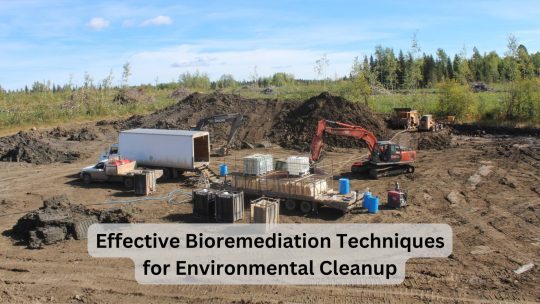
Effective Bioremediation Techniques: A Sustainable Solution for Environmental Cleanup
Bioremediation is a sustainable and cost-effective solution to environmental pollution, using living organisms such as bacteria and fungi to degrade pollutants into harmless compounds. There are various bioremediation techniques, including in situ (at the site of pollution) and ex situ (removing contaminants to treat elsewhere). Other methods include bioventing, biosparging, and use of bioreactors to promote the natural degradation of pollutants.
These techniques can handle a wide array of pollution types including petroleum, heavy metal, pesticide contamination, industrial waste, and landfill leachate. Benefits of bioremediation include its sustainability, cost-effectiveness, versatility, and non-invasiveness.
One company leading the way in bioremediation is Delta Remediation, based in Alberta, Canada. They specialize in applying these techniques to sites polluted with hydrocarbons, pesticides, and industrial waste, and have expanded their operations to Nigeria and Kenya.
Bioremediation thus offers a promising method for environmental cleanup, being both eco-friendly and adaptable to diverse environments. Companies like Delta Remediation are pioneering in this sector, making significant contributions to environmental health.
#Bioremediation techniques#Environmental cleanup#Sustainable solutions#Microorganisms in bioremediation#In situ bioremediation#Ex situ bioremediation#Bioventing for soil remediation#Biosparging for groundwater cleanup#Bioreactors in environmental remediation#Petroleum contamination cleanup#Heavy metal pollution remediation#Pesticide degradation#Industrial waste treatment#Landfill leachate remediation#Benefits of bioremediation#Delta Remediation#Bioremediation company#Alberta bioremediation services#Oil and gas industry cleanup#Hydrocarbon and pesticide decontamination
0 notes
Text
ده بوست كتبته علي لينكدان بشرح فيه معناة الفلاحين بعد شربت ٥ كوبايات شاي متسمم
This could be a project for recycling waste, but #fundamentally, it is a #project to save the lives of thousands of #people from slow death. What do you think about sipping a little tea in this wonderful atmosphere? The green color #refreshes your eyes. You need a little tea to fix your mind. But what if I told you that the tea you are #drinking now contains a #deadly #poison, would you agree? I think it's logical for you to refuse.
It's a disaster that one of the farmers' customs and #traditions is to #recycle the #waste of #pesticides and fertilizers. The empty cans are used again. One can is used for tea, the other for sugar, and a pesticide can made of aluminum is used to heat the tea on the fire.
The improper disposal of empty #fertilizer cans and #chemical pesticide residues can have significant negative effects on #human health and the #environment. The impact on human health can lead to the accumulation of these cohesive chemical substances in body tissues and their movement through the food chain, intensifying biological damage, causing negative effects even at low concentrations. Pesticides can cause acute and chronic health effects, depending on the amount and methods of exposure to the person. Pesticides are associated with tumors, neurological, immune, and reproductive effects, among other health effects. About 385 million cases of non-fatal accidental pesticide poisoning occur each year, with an estimated 11,000 #deaths.
#Residual_chemicals: Even if the cans are washed, they may still contain residual chemicals. These chemicals can leak into #food or #drink and be absorbed, leading to potential pesticide poisoning.
The environmental impact can lead to the deterioration of soil health, groundwater pollution, and the impact on beneficial organisms in the soil. The nature of these cohesive chemicals can affect the nutrient cycle and the natural ability of the soil to absorb pollutants. Pesticides can pollute the environment, affecting up to 80% of sprayed pesticides directly on non-target organisms. The quality of soil and water can deteriorate due to pesticide deposition.
I direct my thoughts to you to consider this issue at the local and global level. The farmer is a human who deserves to live in a safe environment.
Establishing an initiative to recycle pesticide waste and fertilizers is the solution
Sources and references in the comments.
Written by:
Abdallah Soliman
Agricultural Engineer
#RecyclingInitiatives #WasteManagement #SustainableLiving #EnvironmentalHealth #ChemicalWaste #PesticidePoisoning #SoilHealth #GroundwaterPollution #SafeEnvironment #GlobalIssues #LocalSolutions #FarmersRights
FAO
World Food Programme United Nations United Nations Volunteers
Monsanto Company DowDuPont The Carbon Trust DCarbon Global
Syngenta
#التنمية_المستدامة #حماية_البيئة #الزراعة



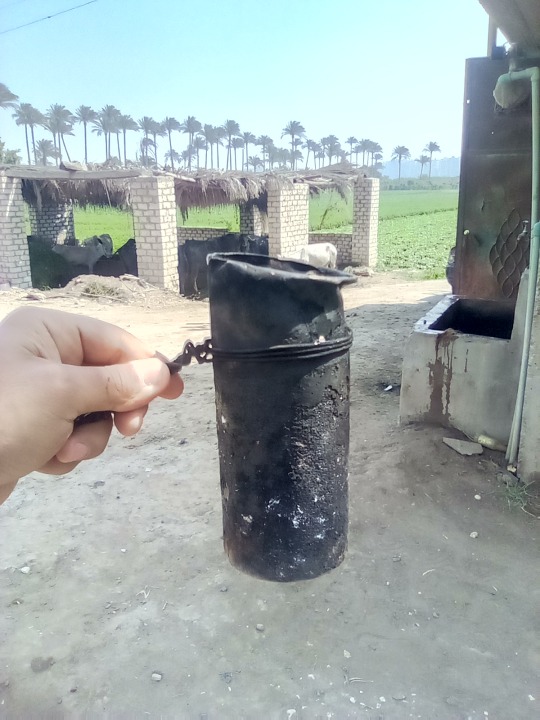

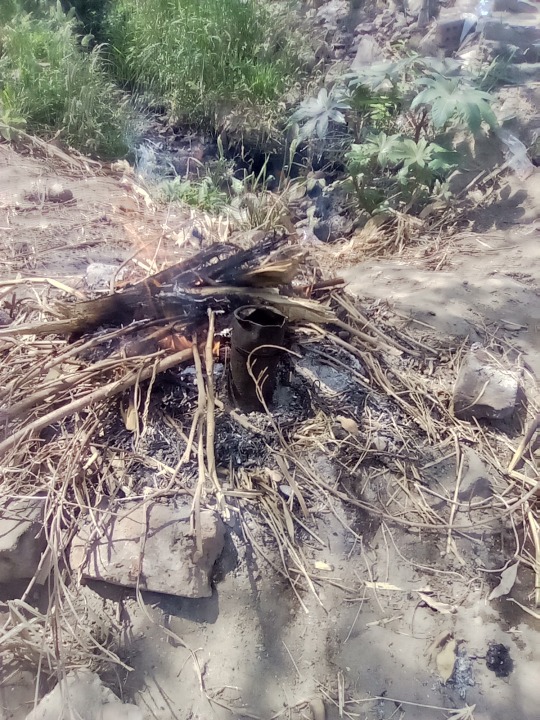



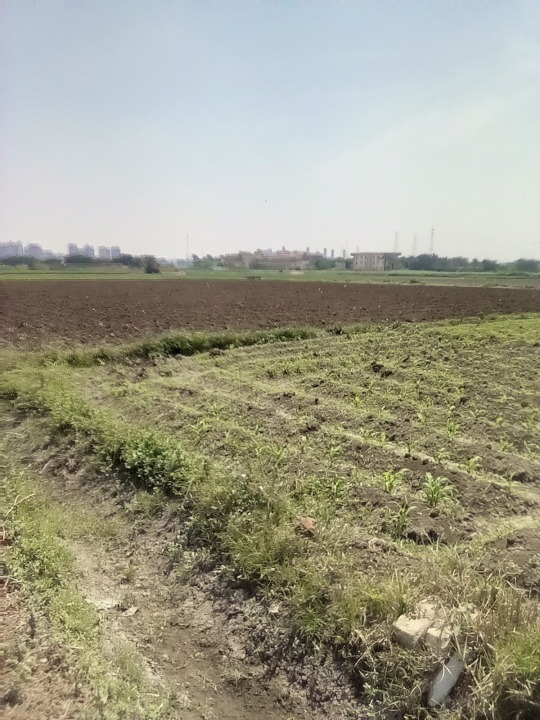
2 notes
·
View notes
Text
-What is to Come for Some Versions of Earth- Ryo channeled by Tyler Ellison
Ryo: Well, we have not officially made prophecies because you are all in a position where you are learning how to create your own lives when we say, "this WILL happen" you end up buying into what we say and then you create what we say. There's nothing wrong with this, at all. You're doing this all the time anyway on different levels. So we have not really given prophecies about what is to come.
There are all types of things we can say about what is to come in terms of your journey some of these things are more positive, some of these things are more negative because that's the nature of your planet. You go through negativity in terms of your movement through cycles so you can transform what you find and ascend even higher so there are a few things that we're able to detect.
One of the things we can detect is there may be on certain versions of Earth processes that seem as if they will do your species in. In other words, on some versions of Earth, we're not speaking to all of you, we're speaking about some versions of Earth, there may be certain processes where it feels like your species has been backed into a corner some of this will be ecological, it will have to do with soil and it will have to do with the idea of what you would describe as environmental pollution.
However, as this intensifies. there will be openings that are created within your specie's collective psyche that allow for spontaneous solutions to be delivered and that will be like a breath of fresh air, and you'll recognize that no matter how dark things get, transformation is always there. It's always available to you. Now, that's only on some versions of Earth.
So we're not speaking to all of you. For some of you, you'll see these things coming and you'll actually take as a society proactive measures so you don't have to be backed into a corner and this will allow for you to accelerate in a rather smooth and streamlined way through challenges. What we'll say is this, the more proactive you are in relationship to the challenges you are presented with, the smoother the process is. When many of you see world challenges, and you say, "oh I'm powerless, I can't do anything about that."
That's when you actually align with the timeline where you start to have your back pushed against the wall. Because these things are being brought to your attention, there is evidence that you are able to do something about it. If you could do nothing about it, and it was truly irrelevant to you, you'd never hear about it. It would never cross your path but if it crosses your path, if you hear about it, this is evidence that you are to do something. Life would not hand it to you arbitrarily. Since when has life ever done something arbitrarily? Everything has a purpose. Everything has a function.
So, if you are presented with different world events, if you are presented with different local events that are requiring your attention--personal things are included in this, respond to it. Don't put it on the back burner, don't push it away. because what you push away will push you. As you try to push it away you will be pushing yourself into that corner we mentioned. You don't have to do that. Respond in whatever way you can. No way is worthless. All ways of responding are significant.
They matter. So respond in whatever way represents your joy, your bliss and that will determine how you move through these things. So, that represents some of the negative things. In terms of positive things, what we will talk about is the following: Open contact will be preceded by many members of your population will be making open contact with their higher selves. This is where many of those solutions we mentioned will come from. So, these things fit together and the rate of this process is determined by you, by the quality of your vibration, how you're living your life. And remember, low quality is not bad, high quality is not good. They're just things. They're just ways.
One way is not better. It's just one way's more pleasing, one way's more uncomfortable, that's it. There's no morality in it. It's not a judgment thing. One path involves more pain, one path involves more pleasure. But as you know, sometimes pain can turn to pleasure, if you use it in a pleasing way. So, these are certain things that are a probable. So, you don't have to be powerless, this isn't "bad" news. We're not saying things you don't already know. Many of you have been told of these things, by your scientists, by those who are paying attention to your planet and it's process, so we're just reminding you, be responsible, take action, have fun while you're doing it. This does not have to be a scary thing. It does not have to be a thing that "does you in". Truly.
Even though people around you might see it that way, maintain your sense, or as we said earlier, respond to these things with love. Love IS an intelligence. The intelligence that is the divine, blisses out. It perpetually experiences ecstasy because it's so ecstatic, it is so easy for it to fall in love with itself and when you go into a state of love--you are tuning into the love that Source has for itself. Because it has given itself unconditional bliss. So when you tune into love and you respond with love, you are responding with one of the highest levels of intelligence that is available. Your love will turn to bliss. Your bliss will turn into the Divine mind. When you devote yourself to that which you already are.
11 notes
·
View notes
Text
Submitted via Google Form: Polluted World
What would a population look like if they evolved on an extremely polluted planet? Parts of the planet will have an average daily AQI of over 700 and it reaches over 1000 perhaps 30% of the time, and it's generally stayed like that for at least a thousand years. It covers most of the land and even many parts of the ocean. It is the main industrial planet for the universe. Minor thing but how about the politics that allowed this to happen, activities of environmental groups or even eco-terrorism? I'm not sure that this is a human populated planet or some other species or multiple species but what can I consider? What about animals and plants? Maybe none, or some extremely resilent species, microorganisms?
Tex: Polluted by your world’s population’s standards? How did it get that polluted in the first place, industrialization notwithstanding? After a thousand years, it’s plausible that any indigenous species to the planet that didn’t die off would have adapted to the new norms of air, water, and soil quality, provided there was zero attempt at climate remediation via legislation and technological innovations.
On Earth, serious legislation was prompted after a combination of near-constant activism and capitalistic innovations to take advantage of the “trend” of being climate-friendly (whether or not the new techniques actually ended up being the case). This has taken several generations, and is still slow to be adapted by all corners of the planet, with most leverage being conducted economically; see: Germany (ecosistant) and France’s laws (CMS) about imported pollutive packaging, etc. Quite possible it will take at least two or three more to start seeing a genuine, stable effect.
If one of your primary concerns is “which species will tolerate pollution,” I think it would be helpful for you to quantify what type of pollution. Is it petroleum-derived products? Is it chemical production by-process dumping? Is it decomposition of genetically-modified materials? Something else? A combination thereof?
Once you’ve got that down, you can research - if you wish - what species are affected and how they are affected.
Further Reading
Air quality index - Wikipedia
Abstract - Composting: A Potentially Safe Process for Disposal of Genetically Modified Organisms by Ajah Sing et al.
Abstract - Health Risks of Genetically Modified Foods by Artemis Dona & Ioannis S. Arvanitoyannis
Oil Pollution topic - ScienceDirect
Abstract - Effect of petroleum hydrocarbon pollution levels on the soil microecosystem and ecological function by Huan Gao et al.
Abstract - Microplastic pollution, a threat to marine ecosystem and human health: a short review by Shivika Sharma & Subhankar Chatterjee
PDF - Critical Review on the Progress of Plastic Bioupcycling Technology as a Potential Solution for Sustainable Plastic Waste Management by Passanun Lomwongsopon & Cristiano Varrone
How the chemical industry’s pollution slipped under the radar - The Guardian
PDF - POLLUTION CONTROL TECHNOLOGIES – Vol. III - Control of Pollution in the Chemical Industry - V. Beschkov
Synth: Re: how it could have gotten so bad, Earth has plenty of real-world examples you could look at to use as jumping-off points. Some examples:
Something seemed great at the time but turned out to have plenty of huge downsides that only became obvious much later. (“Wow this Freon stuff is so much better than using ammonia as a refrigerant!” “Wait, turns out it’s destroying the protective ozone layer.” / “Wow, asbestos has all kinds of amazing applications!” “Shit, it’s also hellaciously toxic.” / “These synthetic fibres are awesome!” “Well damn, microplastics all up in everything.”)
It was so gradual that everyone shrugged it off as no big deal until a tipping point was reached and suddenly it became a very big deal indeed. (“This body of water is so big that surely dumping a little bit of waste in it won’t adversely affect anything,” except every little bit adds up and it goes on for so long that one day the river is on fire.)
The downsides and dangers were known quite well but covered up by people who stood to benefit from allowing it to continue (leaded gasoline, radium paints, plastic “recycling”).
After the environmental decay set in, maybe the powers that be decided to just write off the planet because a.) it is industrially vital so work can't just suddenly cease without major galaxy-spanning consequences, and/or b.) shit's already fucked so why not just keep the worst of it relegated to this planet instead of breaking another one, and any remaining native species still living there are considered acceptable collateral damage.
Reading up on industrial pollution might be a good starting point. Did things start out well-intentioned and just kind of fall apart? Was it rife with corruption and greed from the get-go? Perhaps a mix from both ends of the scale? A tale dealing with corporate greed or government cover-ups will unfold differently than one following efforts to mitigate and rehabilitate the damage. A story told from the point of view of one of the workers will differ from that of one of the leaders of industry, which will differ from that of an angry and sickly native inhabitant. Consider what sorts of themes and plot points you want to have driving your story, and that will help you decide how to focus the narrative, and in turn how to build up the history of this planet so it best serves the story you want to tell.
21 notes
·
View notes
Text
Farmers who farm under two hectares, I think, provide something like 30 to 40 percent of the world’s food . . . and if you expand the definition of small-scale farmers to be a bit more than two hectares, those are the ones who are feeding the majority of the world. Moreover, most of the world’s small farmers use agroecological practices because it makes sense when producing at smaller scales not to depend on expensive external inputs like fossil fuel-based fertilizers and synthetic pesticides. These small farmers need more support and more resources to expand their knowledge, productive capacities, and abilities to adapt to climate change, and to improve their livelihoods. Meanwhile, the large-scale farmers are producing commodity crops for cattle, for biofuel, and for processed food, none of which is really helping feed us. They haven’t solved the social problems of hunger or malnutrition, and, worse, they have exacerbated ecological problems, leaving soil depleted and water sources polluted. What has solved the social problems in the food system is organizing around political rights. Look at Kerala in India, which has had a lot of different, better human development indicators than many other states. And they’ve had a more redistributive socialist government for quite a long time. More and more research suggests that techno-optimist and technocratic solutions don’t work. And agroecology and food sovereignty are about allowing people the feedback to say what works.
67 notes
·
View notes